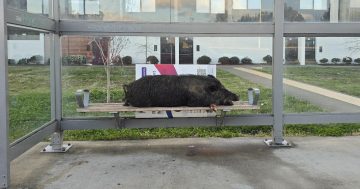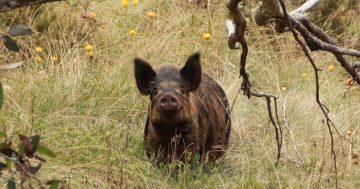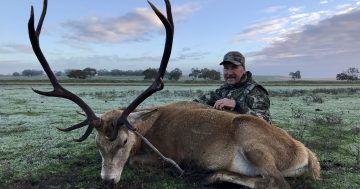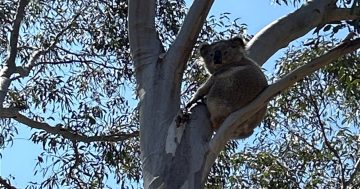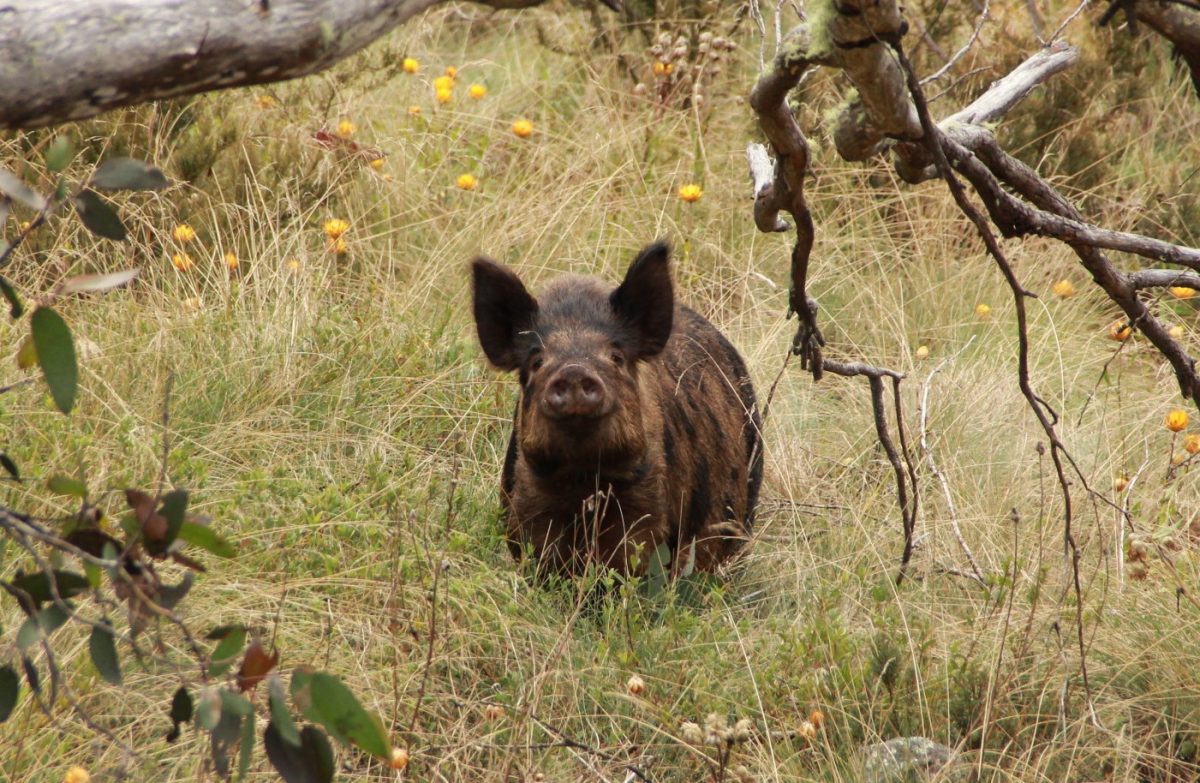
A feral pig in Namadgi National Park. Photo: EPSDD.
Wild pigs have moved into Narrabundah Hill on the edge of Duffy and rangers will now set traps as part of their localised control program to keep feral animals out of Canberra’s suburbs.
Dog walkers in the wooded reserve on Eucumbene Drive recently spotted the tell-tale green droppings of feral pigs and some dogs have had encounters with the animals.
One Rivett woman who walks regularly at Narrabundah Hill said her dog had chased one only to turn up later a little shaken by the adventure.
Manager Invasive Animals and Overabundant Wildlife at the Environment, Planning and Sustainable Development Directorate, Mark Sweaney said more reports had prompted the swift action without which feral pigs and other invasive animals would certainly end up in urban areas.
Mr Sweaney said that while there were no strong records of pigs attacking people, dogs could be an issue and warned walkers to back away and report the incident to Access Canberra.
“Pigs can be fairly ignorant of people and they might not have had many encounters with dogs, so they might feel threatened,” he said.
“If a sow was protecting her piglets she’d be defensive, or a boar might become defensive.”
Mr Sweaney said the suburbs’ good connections to river corridors, Namadgi National Park and other conservation areas were really good for wildlife in Canberra’s nature reserves but they also helped pest animals travel into the city as well.
“We’ve had pigs on Tuggeranong Hill, in the north at Mulligans Flat and Goorooyarroo Nature Reserve, and we also get feral deer into town on a semi-regular basis.
“We had a sambar deer at Parliament House a few years back and just recently on Long Gully Road, on Black Mountain, and in Kama Nature Reserve.”
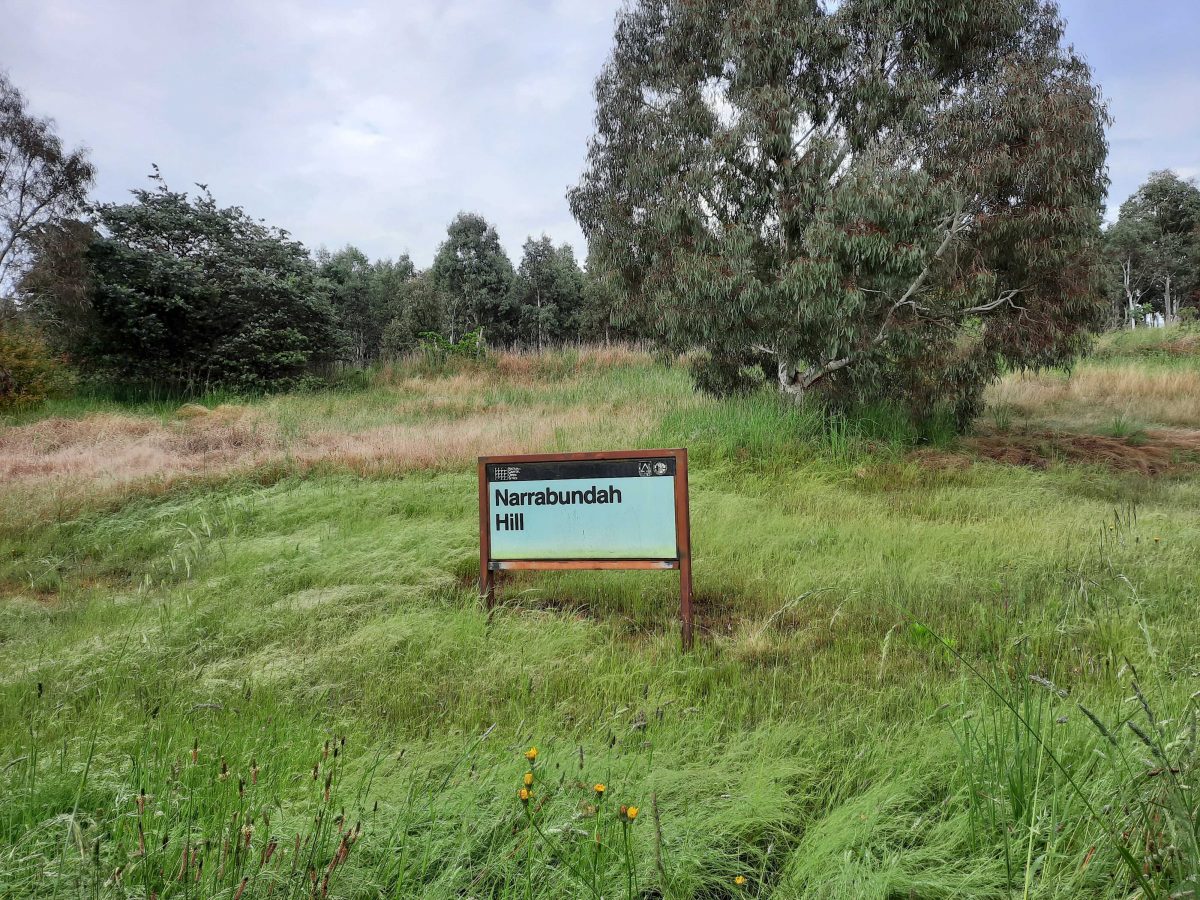
Narrabundah Hill in Duffy, where feral pigs have been encountered recently. Photo: Ian Bushnell.
There is an established population of pigs in the Murrumbidgee River Corridor, and they have been in the Molonglo corridor before, with one trapped near the Arboretum, which did get the occasional pig in it, as well as deer.
The main strategy is to control where they occur so numbers are kept so low they don’t disperse into the suburbs.
Since the 2020 bushfires, EPSDD has been able to resume annual aerial culling – shooting from helicopters – thanks to Commonwealth and ACT Government recovery programs.
Mr Sweaney said that kept numbers down and rangers and field staff followed up with ongoing trapping and poisoning in known areas and problem spots.
“Pigs like to be near water and don’t always travel a long way,” he said. “They can have a small range so controlling them where their primary location is is the most effective method,” he said.
The last aerial cull in May took out about 250 feral pigs – about half in Namadgi, quite a few from the Googong foreshore and the rest from the Murrumbidgee River corridor.
Another one will take place next May.
“The primary benefit is the conservation outcomes in protected areas,” Mr Sweaney said. “But we definitely have a secondary goal of preventing urban populations.”
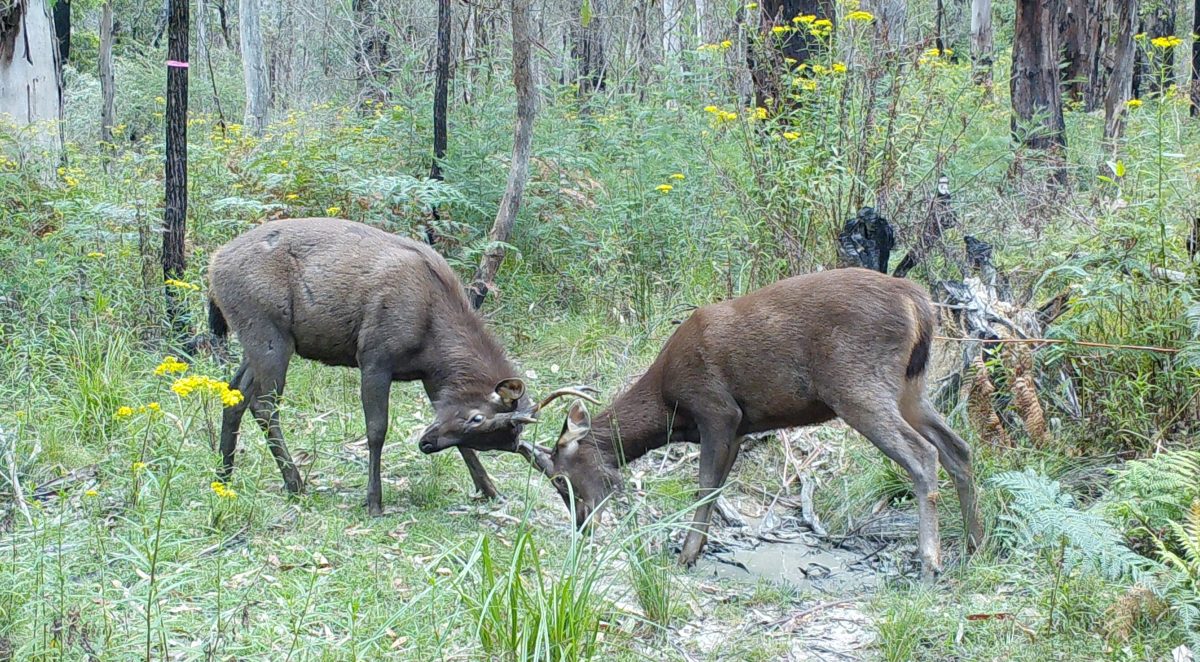
Sambar deer can be found throughout NSW and areas of the ACT, including occasionally in the suburbs. Photo: Rod Hart.
Successive wet seasons have been good for all wildlife with continuous feed available, so there are more pigs at present than in dry periods.
They are also vigorous, all-year breeders, producing big litters of about 10 piglets.
Mr Sweaney said illegal hunting, along with the associated damage to park infrastructure such as broken gates, remained an ongoing problem despite recent prosecutions.
They also occasionally leave pig dogs behind, and while there are no cases in the ACT, there are reports elsewhere of pigs being introduced to establish a hunting population.
Pigs, deer and rabbits are the top three invasive species on EPSDD’s hit list, with all three doing considerable damage to the environment.
Foxes are also abundant but more difficult to contain, while wild dogs are tackled where they threaten livestock.
Mr Sweaney said good resourcing, along with the wet seasons, had helped Namadgi’s recovery from fire and areas such as the alpine bogs were in really good condition because rangers had been able to manage the overall abundance of pests.
“Namadgi remains relatively low impact for invasive animals which is something we can be proud of in the ACT. It’s not an easy task,” he said.












